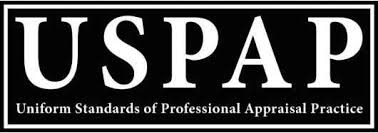Understanding USPAP
 M&E Appraisal Associates, Inc. (“M&EAA”) prepares all machinery & equipment appraisals, inventory appraisals, and medical equipment appraisals in conformance with Uniform Standards of Professional Appraisal Practice (“USPAP”) requirements.
M&E Appraisal Associates, Inc. (“M&EAA”) prepares all machinery & equipment appraisals, inventory appraisals, and medical equipment appraisals in conformance with Uniform Standards of Professional Appraisal Practice (“USPAP”) requirements.
USPAP is a set of Standards that is applicable for most appraisals prepared in the United States. USPAP was developed by the Appraisal Standards Board (“ASB”) of the Appraisal Foundation. There are 10 Standards associated with USPAP. Standards 7 and 8 establish requirements for the development and reporting of personal property appraisals and are therefore applicable to machinery & equipment appraisals, inventory appraisals and medical equipment appraisals.
M&EAA appraisals at a minimum contain the following USPAP Standards requirements: the identification of the client and any intended users; a statement of the effective date of the appraisal and the date of the report; a statement of the purpose of the appraisal, including the type and definition of value and its source; identification of the intended use of the appraisal; a statement of all assumptions, hypothetical conditions and limiting conditions that affected the analysis, opinions and conclusions; a summary the information analyzed, the appraisal procedures followed, and the reasoning that support the analysis, opinions and conclusions; the inclusion of a signed certification by the appraiser.
In addition to the 10 Standards, there are also basic rules in the Preamble section of USPAP. These include but are not limited to the Ethics Rule (which encompasses the Conduct, Management, and Confidentiality Sections), Record Keeping Rule, and Competency Rule. These rules establish the basic requirements for the ethical conduct of USPAP compliant appraisers.
The Ethics Rule is intended to promote and preserve the public trust. Within the Ethics Rule are the Conduct, Management and Confidentiality Sections.
The Conduct Section deals with the performance of an appraisal and the appraiser’s ability to be impartial, objective, and independent and to not have any personal interest in appraisal assignment. Pursuant to the Conduct Rule, the appraiser “must not communicate assignment results with the intent to mislead or to defraud” and “must not perform an assignment in a grossly negligent manner.” In regard to any personal interests in the property, the appraiser must disclose to the client any current or prospective interest in the subject property or parties involved.
The Management Section primarily details five issues relevant to the appraiser/client relationship. An appraiser can never accept an assignment that is contingent upon: reporting a predetermined opinion of value; a direction in value that favors the cause of the client; the amount of a value opinion; attainment of a stipulated result; the occurrence of a subsequent event directly related to the appraiser’s opinions and specifics in the assignment’s purpose.
The Confidentiality Section states that he appraiser must not provide anyone with any confidential information that the client provides to the appraiser, and most importantly, must not disclose a value to anyone other than the client and any other intended users of the appraisal.
The Record Keeping Rule refers to the retention of the appraiser’s work file. The appraiser must prepare a work file for each report prior to its delivery to the client. The work file can be in a printed format or an electronic format but it must have the necessary and required information outlined in USPAP.
The Competency Rule applies to the appraiser prior to the acceptance of an appraisal assignment. The appraiser must determine if they are competent to perform the assignment. If not competent, the appraiser must acquire the necessary competency to perform the assignment, or decline the assignment. Competency requires the knowledge, experience and ability to perform the appraisal assignment.
M&EAA machinery & equipment appraisals, medical equipment appraisals and inventory appraisals are prepared in compliance with USPAP requirements. In addition, M&EAA appraisers and associates are current with all continuing education and testing requirements.
 M&E Appraisal Associates, Inc.
M&E Appraisal Associates, Inc.







